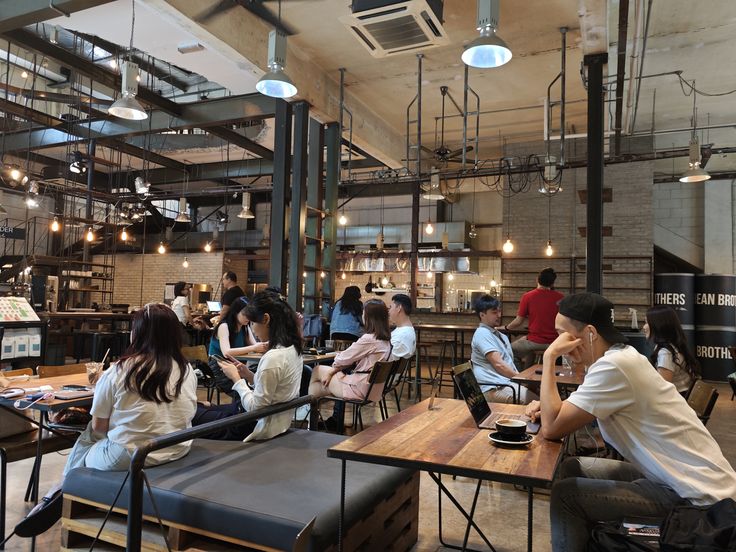How to start a café is one of the most common questions for first-time owners—especially those who dream of running their own coffee shop but feel overwhelmed and unsure where to begin. You’re not alone. Most new café founders have faced the same challenge:
“What should I do first to build a café that runs smoothly and grows sustainably?”
This comprehensive guide walks you through each essential step—from defining your concept and choosing a location to planning your menu, finances, operations, and marketing—so you can start your café business with clarity and confidence.
Define Your Concept Before You Start a Café
Before investing money or renting a space, the most important step in how to start a café is shaping your concept and direction. This helps you understand what customers truly want and how your café will meet those expectations.
Many new owners think that having a nice space or good drinks is enough. In reality, if your café concept is not aligned with customer needs, you can easily waste capital and struggle to build a loyal customer base.
Popular Café Models
Take-away café
Low investment, fast break-even, ideal for students and busy office workers.
Limitation: Harder to build an in-store experience and long-term loyalty.
Book café or garden café
Creates community and atmosphere-driven loyalty.
Limitations: High capital, longer ROI, requires refined operations to maintain experience.
Specialty coffee shop
Focus on coffee quality, advanced brewing, and premium customer experience.
Limitations: Requires professional training and strict quality control.
Identify Your Target Customers
-
Students: Affordable prices, trendy drinks, Instagrammable spaces.
-
Office workers: Quiet environment, fast service, convenient seating.
-
Families: Spacious, safe, diverse menu for all ages.
-
Tourists: Local experience, signature drinks, photogenic design.
Define Business Goals
Short-term profit? Long-term branding? A unique experiential café?
Your goal shapes your menu, pricing, marketing strategy, and interior design.
Tip: Create a 3–5 year vision and a SWOT analysis to make well-informed decisions from the beginning.

Market Research – A Core Step in How to Start a Café Successfully
Market research is essential to understand customer needs, competitor strategies, and market gaps you can fill.
Analyze Competitors
Observe:
-
Pricing
-
Menu variety
-
Service quality
-
Interior design
-
Customer experience
Document strengths (beautiful space, unique drinks) and weaknesses (slow service, high prices).
A comparison table helps you identify opportunities to differentiate your café.
Understand Customer Behavior
Research:
-
Preferred drinks
-
Spending habits
-
Lifestyle
-
Unmet needs (healthy drinks, quiet workspace, creative menu)
Segment them to customize your service and offerings.
Useful Market Research Tools
-
Google Trends
-
Facebook & Instagram insights
-
Online surveys (Google Forms)
-
Offline visits to competitors
Tip: The more data you gather, the easier it becomes to create the right menu, price points, and marketing strategy—reducing risk and improving success rates.

Financial Planning – A Critical Step in How to Start a Café with Stability
Many new owners only consider rent and coffee machines, but a café requires comprehensive financial planning.
Calculate Initial Investment
Common startup costs include:
-
Rent, renovation, interior design
-
Equipment: espresso machine, grinder, fridge, tools
-
Ingredients: coffee, tea, milk, pastries
-
Staffing & training
-
Marketing, branding, business licenses
-
Unexpected expenses (repairs, spoiled goods, replacements)
Estimate Daily Operating Cash Flow
Example:
50 customers/day × 50,000 VND average spend → ~2,500,000 VND revenue/day
Daily expenses → 1,500,000–2,000,000 VND
This helps you calculate your break-even point.
Tip: Keep at least 20% of your budget as a contingency fund.

Choose the Right Location – A Key Answer in How to Start a Café Effectively
Location directly impacts traffic and revenue.
Key Location Criteria
-
Easy to access
-
High foot traffic
-
Appropriate size
-
Reasonable and clear rental terms
-
Permission for renovation and décor
Natural Marketing Factors
-
Good view
-
Natural lighting
-
Instagrammable design
Tip: A small but strategic location outperforms a large but hidden one—especially for new cafés.

Build Your Menu – The Heart of Your Café
The menu is the heart of the café. It shapes the customer experience and directly impacts revenue. A well-designed menu makes it easy for customers to choose, feel satisfied, and come back—an essential factor when you open a café.
Choose Signature Products
Focus on signature drinks or drink + pastry combos. These are the items that express your café’s identity and create a strong first impression—especially in the early stages of opening.
Ingredients
Ingredient quality is critical. Coffee, tea, milk, and pastries should have clear origins, be safe, and taste consistently good. Today’s customers are sensitive to quality and food safety—particularly students and families—so this is something every café owner must pay close attention to.
Menu Design
Group drinks by category, set clear and logical pricing, and design the layout to be visually appealing and easy to read. An overly long menu can overwhelm customers. It’s better to start with around 6–10 core items and gradually expand based on real demand and trends. This is also an effective strategy for new café owners.
Test Before the Grand Opening
Invite friends or potential customers to try your menu. Gather feedback on taste, price, drink names, and presentation, then fine-tune everything before your official opening. This reduces risk and optimizes the customer experience from day one.
Prepare Operations and Staffing
For smooth operations, you need to standardize your processes. Each step—from prep to brewing to serving—should have a checklist to ensure consistent taste and efficient service.
Staffing
Depending on your café size, you may need baristas, servers, and a cashier. Training both skills and service attitude from the beginning is essential to make customers feel welcomed and create a positive impression.
Equipment
Coffee machines, refrigerators, glassware, furniture, brewing tools, and supporting equipment must be complete and of good quality. Standardized processes make it easier to manage and control quality, especially when your café is newly opened.
Marketing & Launching – A Vital Step in How to Start a Café Successfully
Build Your Brand
Your logo, café name, and online presence form the foundation for brand recognition when you open a café.
Marketing Strategy
Combine online and offline activities to support your café launch:
-
Social media: Use Facebook, Instagram, and TikTok to share drink photos, space shots, and customer experiences—key channels during your opening phase.
-
Mini-games & opening promotions: Offer discounts, vouchers, or free tastings to attract customers and create buzz.
-
KOLs & food bloggers (if budget allows): Collaborations help your café gain visibility and build trust faster.
Soft Opening
Invite friends and family for a soft opening to test your operations. Use this phase to refine your menu, service, and workflow before welcoming larger crowds—especially helpful for first-time café owners.
Tip: Brand storytelling, beautiful imagery, and an “Instagrammable” space will help your café grow organically, attract young customers, and reduce advertising costs.

Be Patient – The Final Key in How to Start a Café Successfully
The early phase is a time for learning and adjusting. Collect data on:
-
Best-selling items
-
Peak hours
-
Customer feedback on drinks and service
Based on real numbers, adjust your menu, pricing, staffing, and service process.
Tip: Patience is key. There’s no need to rush into expansion or heavy investment in the beginning.
Opening a café is an exciting journey that requires careful planning, market research, location selection, menu development, and operational preparation. By starting with small, well-thought-out steps, you reduce risk and increase your chances of success.
Writing down your goals, analyzing your target customers, and sketching your first draft menu are among the most important steps to turn your café dream into reality.
